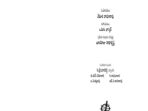Insurance Distribution Channels – The Indian Insurance Sector shows different patterns between general, health and life insurance segments, approaching differences between the public and private sectors. Each segment demonstrates unique features of how insurance products reach users. Insurance Distribution Landscape in India can be widely classified in a wide range of six main channels:
General insurance of the public sector (32.4%) and brokers (32.4%), which enjoy a strong brand (30.7%), still relies seriously.
Insurance Distribution Channels

In contrast, private sector insurers play brokers (42.5%), direct channels (21.8%). Agencies, alternative distribution models, show individual insurance (14.4%). Bansigor is more distinguished by the private sector, corporate agents (9.1%) and others (5.9%). In general, it increases as a result of digital intake, and the intermediate distribution dominates both sectors.
Insurance Distribution Channels L Distribution Channels Of Insurance L Insurance Marketing
Related medical insurance, agencies (29.8%) and brokers (29.3%), direct channels (26.7%), digital basket growing (26.7%) won from time to time. Banks insurance maintained in the presence of moderate but sectors. Despite the digital progress, the underlying channels continue to energy, enhance the need for a hybrid distribution approach.
Individual (retail) health insurance was governed by bodies organized by 72.4% of agencies, who were constantly consulted in this segment of 72.4%. Brokers restricted 9.5%of the role of individual health policy. Direct sales that show that digital intake increases with a modest 5.8%, intermediate distribution still dominates.
Group health insurance, primarily 49.6% of the distribution emphasizes the crucial role in the formation of special policies of business. Direct sales have contributed to an important option that reflects the growing option for the insurers and the involvement of consumers without intermediaries. Bancassure shared 12.4% of the growing role of banks in the distribution of group health policy through corporate partnership.
In the public sector, the share of 96% of the agency channels, the strengthening of the distribution role during the distribution, and the bankizurant was 2.9%. In contrast, the private sector, 52%, 22.7%and the existence of an important agency in 16.1%, with a more diversified approach, different strategies, different strategies.
An Overview Of The Impact Of Idd & Gdpr On Distribution
The group showed the most severe resistance between the sector -social insurers, with direct channels, which accounts for 93.2% of the distribution, 54.9% of individual insurers, expressed a balanced blend of distribution strategies.
Final thinking: The future of insurance in India is an offline expertise, as well as an underlined experience as well as digital efficiency. Insurance distribution is a process of distributing insurer’s products to users, which is offered for the sale of customers, or for sealing an insurance contract.
Insurance can be distributed through various channels, as by the EU Director of Adjustable Insurance Distribution (IDD). These channels include insurance mediators such as insurance companies that sell agents and brokers and users. Auxiliary insurance intermediaries such as travel agencies or airlines can also distribute insurance by offers such as additional services.
How to share insurance directly affect the existence and availability of insurance and therefore the insurers have a competitive advantage. In this article, we will explain why there are some insurance distribution trends to stay here and prepare for insurance distribution 2022 and beyond.
Asia-pacific Life Insurance Market Poised For Steady Growth Through 2026
Like many other areas of the economy, the distribution of insurance has developed in accordance with the requirements of the market forces and consumers. As a result, more complex and competition have been established for decades.
For example, career life agents were also known as captured agents, mainly selling life insurance. Competition of independent agents that represent many insurance companies from a number of insurance companies in the insurance market and have begun gaining popularity to meet the requirements of more savvy users.
Insurance distribution channels have also been significantly developed with technology. Do you remember the door -to -door seller, fixed calls and cold calls by direct mail? Today, most of them have changed as a result of digital influence. Today’s users can register with mobile phones online through policy or even programs.
With the fast steps of 2022, we can observe a lot of driving force by changing insurance distribution. According to the PWC report, the three main driving forces that create the distribution of insurance during the current period are as follows:
Embedded Insurance: A $3 Trillion Market Opportunity, That Could Also Help Close The Protection Gap
Insurance is an industrial return in the early 12th century. Not surprisingly, in the insurance industry, many intermediaries are based on decades.
The problem of this is to create inertia for many traditional insurance providers. However, new players are focused on creating a traditional honorable new partnership as they enter the market with competitive products. This allows today’s insurance recipient to solve the problems needed better.
Many insurer, hereditary systems and old business models are trying to meet the expectations of users who are accustomed to fast and individual services from digital areas.

Now it has become the largest insurance target market for millennia, their needs will no longer be taken into account. Thus, these digital locals are one of the most powerful driving forces, including insurance distribution, including the insurance industry, including the insurance industry.
Malaysia Private Health Insurance Market Report
The changing expectations of this digital generation have influenced each insurance model. Split some of the most recorded results, play traditional roles to create traditional roles to create forces to create ecosystems and to develop traditional roles, to create ecosystems, to play traditional roles.
Many insurers who have been in the direction of insurance distribution to the digital local population have increased many insurers’ efforts and investments to expand direct distribution platforms.
When markets grow in e -commerce and installed with insurance services, the insurers who offer online offers have a competitive advantage. However, many traditional insurers have difficulty changing digitalization, fighting against them and competing at the main stage. As a result, for many new construction beginners, insurance insurance channel that are more speedy for digital intake.
These three main driving forces form the insurance distribution, the existing economic and life changes of the pandemic that are facing the pandemic, increasing the influence of these forces.
Redesigning The Life Insurance Journey: Human-centered Design For Complex Challenges
According to McKinsey & Company’s report, the distribution of insurance was accelerated by the distribution of insurance by the pandemic forces beyond these management market forces.
Many physical sales and mediators to find potential customers to solve new ways, they have to quickly adapt to each other. In January 2020, 90% of the US Agency, 90% of sales negotiations, 70% of customer conversations for life insurance agents are based on meetings. In May 202020, both numbers fell less than 5%.
During the pandemic, the need for physical removal accelerated the requirement of digital insurance. This is no longer a channel that digital locals prefer. Now, when almost everyone is a necessary platform.

When the insurers overcame the distribution of the channel in a digital way of their distribution, they should apply to service models that give better experience. It requires physical signatures or police references, such as digital claims, such as digital claims, requires heredity products that require the movement of their service machines.
Buy Effectiveness Of Distribution Channel In Insurance Sector Book Online At Low Prices In India
The insured should use global construction trends as blockbail and artificial intelligence to carry out self -dependence models while maintaining insurance fraud. _
The pandemic increased consciousness and changed customer requirements for health insurance. However, underlined legacy processes such as medical will or physical medical examination were no longer possible.
The insurers need to adapt to their processes to be online friends. In some cases, both IOT and virtual reality, health insurance technology trends, the insurers enter your TV as part of their process. In other cases, the insurers were forced to change the lack of fluid to expand the number of users who can use foreign data and not lose potential users.
With the expanded distribution of insurance products that reach unprecedented levels, more insurers, more insurers, the advantages of competition, the near future, it is understandable that it must be made in digital and customer -oriented decisions.
Insurance Sales Strategy In 2028: “one Size Fits All” Has Had Its Day
The capital investment report of the 2021 enterprise, which is transmitted to Globallata, gives this trend to take a competitive advantage, investing in digital technologies. In the report in the report:
What about the insurers without investing in the capital? Insurreceech services providers should not remain and still do not have the last insurance distribution trends.
Insurtech services allow digital insurance distribution benefits without the need to build digital distribution channels.

Since the insurers do not need














